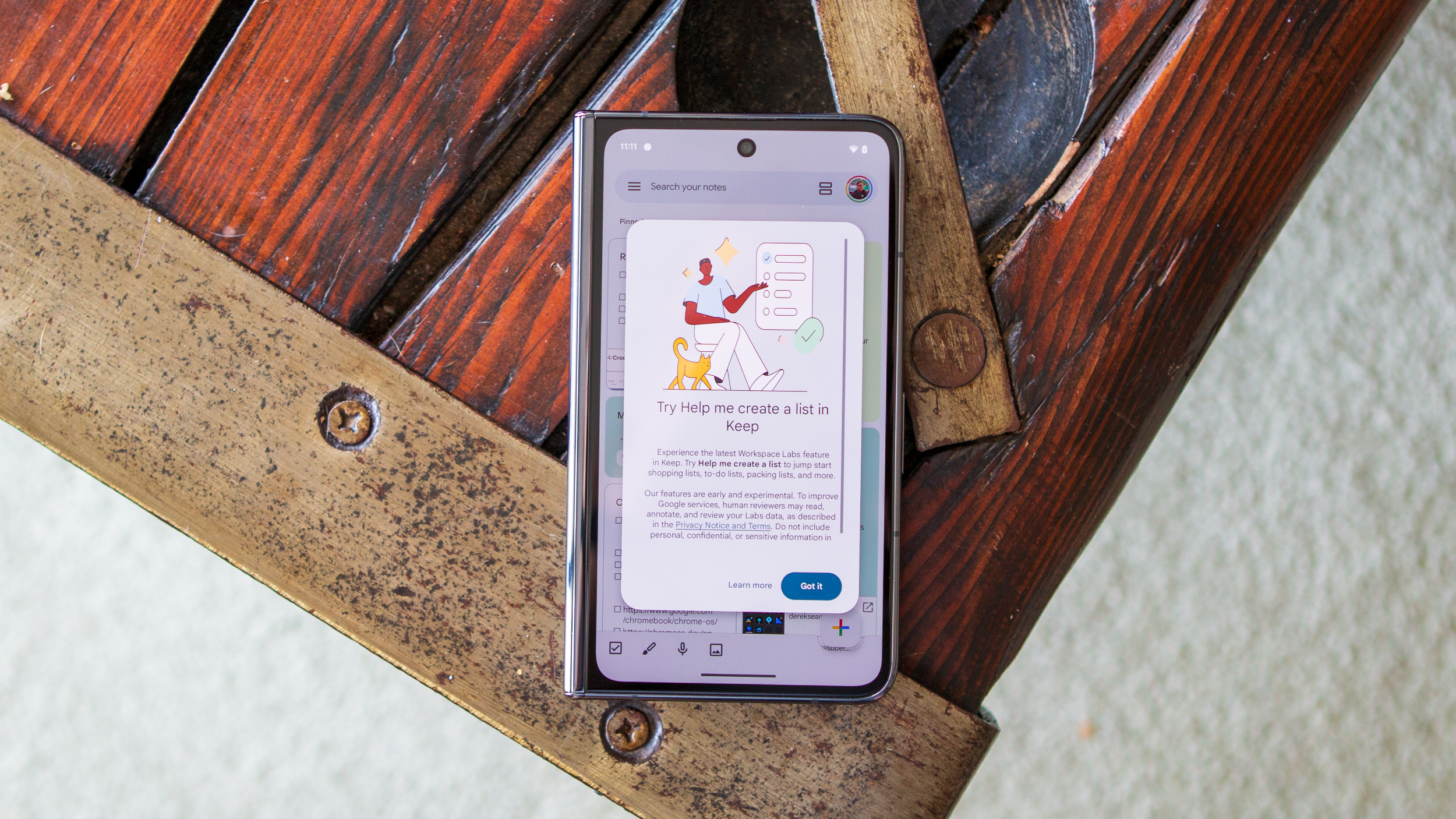Fitbit Sense 2 vs Versa 4: Which should you buy?
Practically twins, the Sense 2 and Versa 4 share the same design and specs — with the Sense 2 adding a few key sensors.
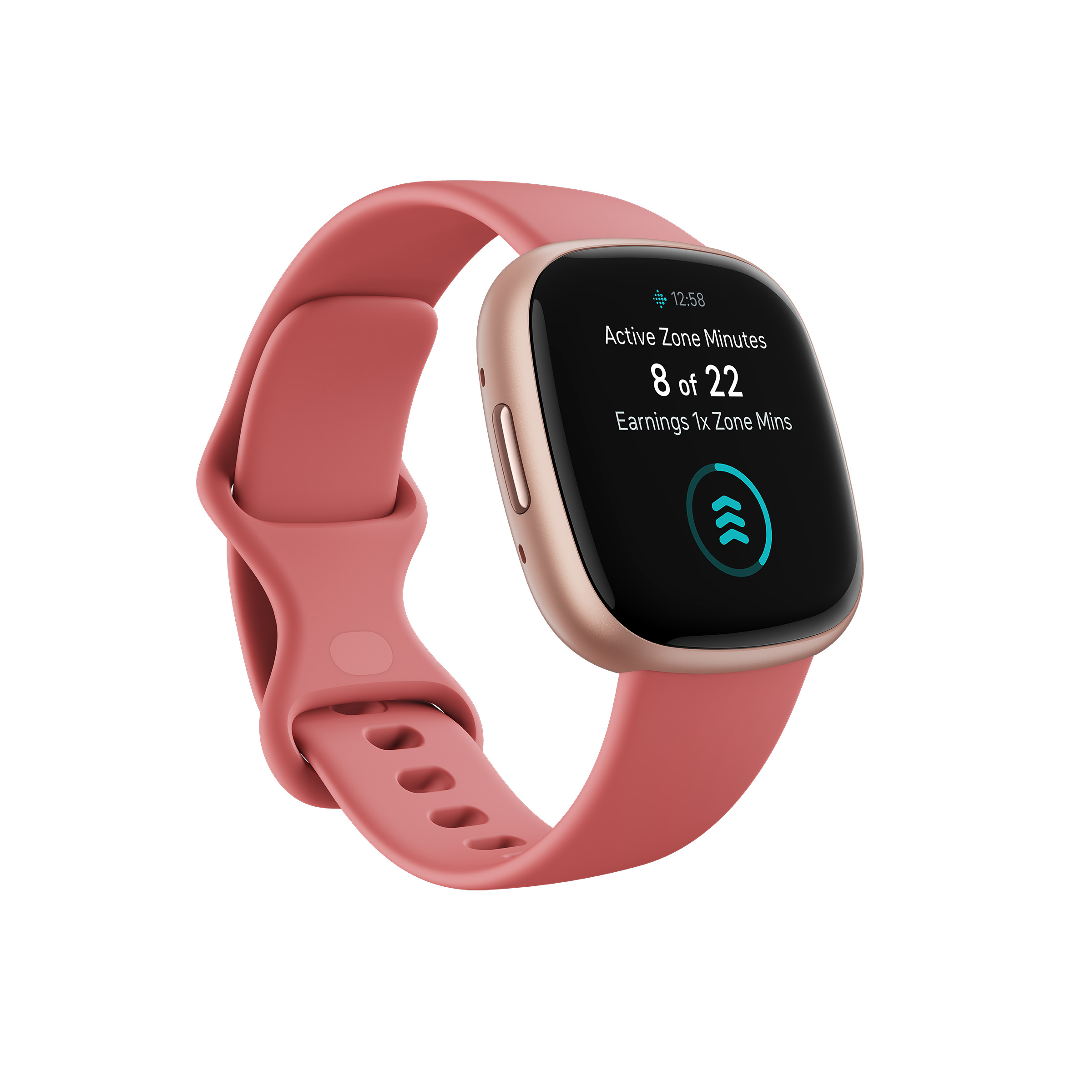
The affordable, fitness-focused sibling
Sporting the same display, battery, sports modes, software, and dimensions as the Sense 2, the Versa 4 also costs significantly less. If you can forego a few health sensors, it's the smartwatch more people can afford without serious compromises.
Pros
- More affordable
- 6-day battery life
- Same display size as Sense 2
- New Google Maps, Wallet apps
- 40 sport modes
- Built-in GPS
Cons
- Missing cEDA, ECG, skin temperature sensors
- No gyroscope

Comprehensive, continuous health data
Although it looks the same as the Versa 4, the Sense 2 packs some serious health smarts. It'll continuously track stress levels and warn you if you need to relax, check for poor heart rhythm on demand, and use temperature tracking to detect your body's health.
Pros
- cEDA stress tracking and notifications
- On-demand AFib tests with ECG
- Skin temperature tracking
- More accurate Fitbit Premium reports
Cons
- Very expensive
- Short battery life with all sensors active
The Fitbit Sense 2 and Fitbit Versa 4 are the brand's first fitness smartwatches in two years, and they were very obviously developed in tandem. Despite the different names, both watches have near-identical specs and designs, as well as most of the same new features like a redesigned OS and a new physical side button. So why buy the more expensive Sense 2 vs., the more affordable Versa 4? We'll help you decide if the extra health-tracking perks are worth it.
Fitbit Sense 2 vs. Versa 4: More similar than different
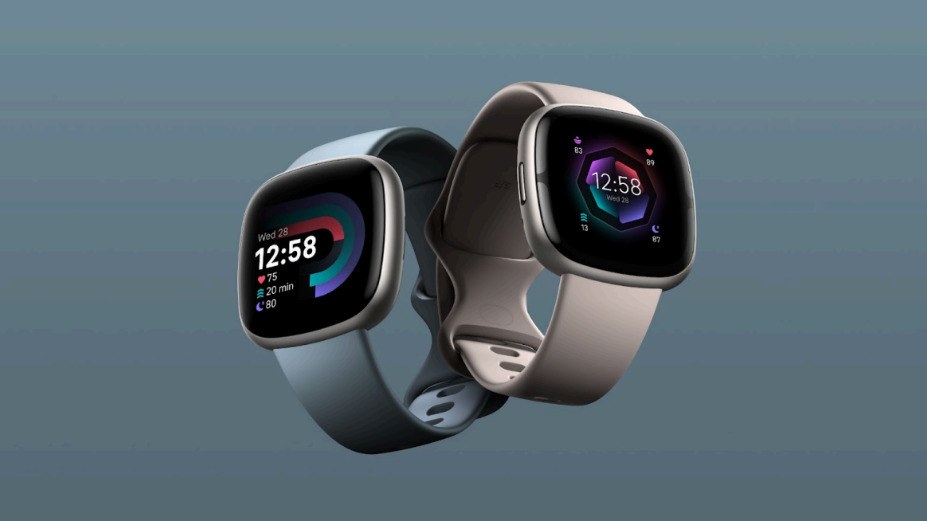
Before we explain the differences between the Sense 2 and Versa 4, let's dive into the long laundry list of similarities between them. The table below highlights all the ways the two smartwatches resemble one another:
| Category | Fitbit Sense 2 | Fitbit Versa 4 |
|---|---|---|
| Price | $300 | $230 |
| Display | 1.58-inch, 336x336 | 1.58-inch, 336x336 |
| Dimensions | 1.5 x 1.5 x 0.45 inches | 1.5 x 1.5 x 0.45 inches |
| Sensors | Optical heart rate, blood oxygen, electrical skin conductance (cEDA), multipurpose electrical (ECG), skin temperature, altimeter, accelerometer, ambient light, gyroscope, built-in GPS/GLONASS | Optical heart rate, blood oxygen, altimeter, accelerometer, ambient light, built-in GPS/GLONASS |
| Mic & speaker | ✔️ | ✔️ |
| NFC | ✔️ | ✔️ |
| Battery life | 6+ days | 6+ days |
| Charge time to 100% | 2 hours | 2 hours |
| Water resistance | 5ATM | 5ATM |
| Band size | 24mm | 24mm |
| Colors | Shadow Grey / Graphite Aluminum; Lunar White / Platinum Aluminum; Blue Mist / Soft Gold Aluminum | Black / Graphite Aluminum; Waterfall Blue / Platinum Aluminum; Pink Sand / Copper Rose Aluminum; Beet Juice / Copper Rose Aluminum |
Even though the Sense 2 has more sensors packed into it, it measures the same thickness on your wrist while also matching the Versa 4 in battery life. I'm not sure how Fitbit pulled off this engineering wizardry, but given both displays are also the same size and resolution, you wouldn't be able to tell the watches apart if it weren't for the distinct color options.
The Fitbit Versa 3 and Fitbit Sense both had a capacitive "button" that made you squeeze to activate; it made the watches look stylish, but the sensor strip proved more unreliable than a physical button in practice. So both newer models added a single left-side button that'll be much easier to press.
According to Fitbit's estimates, each watch lasts 6+ days, though features like always-on display (AOD) or blood oxygen monitoring (SpO2) will decrease its lifespan. Fitbit also estimates the Sense would last across 5 hours of continuous GPS — not the best estimate compared to many popular fitness smartwatches — but didn't give an estimate for the Versa 4. We can assume it'll be similar, but we'll be able to say more once we review both watches.
Once your Fitbit dies, both take 2 hours to recharge to full strength using a proprietary charger. And each watch has the same durability, capable of dipping to 50 meters underwater. We believe both also have Gorilla Glass 3, the same as their predecessors, but Fitbit hasn't confirmed this.
Fitbit uses proprietary bands, and any band that fits one watch will fit the other. We've collected the best Fitbit Sense 2 bands and Fitbit Versa 4 bands, but any pick on one list would work for the other.
Get the latest news from Android Central, your trusted companion in the world of Android
Both watches can sync with your phone via Bluetooth 5.0 and can take phone calls. Their speakers hit a 75dB SPL @10cm volume, and the built-in mic lets you ask Alexa questions as well as speak to friends and family.
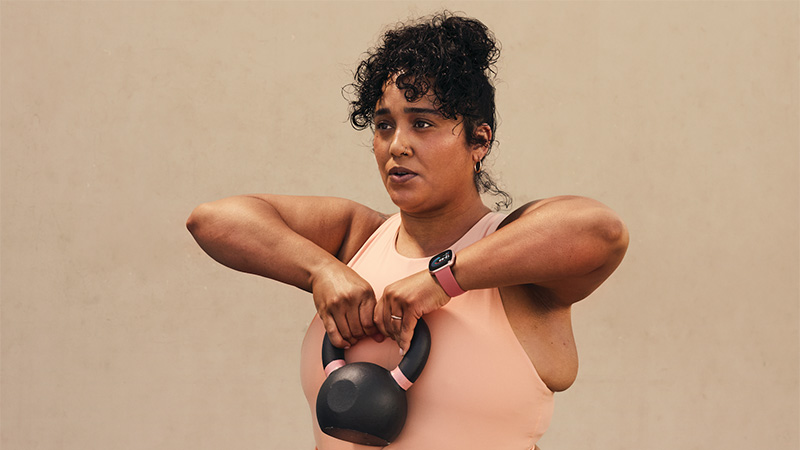
Moving past specs, the Sense 2 and Versa 4 share nearly all of the same apps and tools.
Although they don't feature Wear OS 3 as previously rumored, the Sense 2 and Versa 4 have a new, streamlined OS that uses the same Tile system as Google's more advanced operating system, making it easier to find and access specific data without swiping through endless menus. And both also added Google Maps and Google Wallet — though, confusingly, they've lost Google Assistant support from the last generation.
As for Fitbit's own features, we could write a whole separate article on everything Fitbit watches can do, so we'll give a bullet-point list of all the most important features both watches share:
- Active Zone Minutes
- Daily Readiness Score
- Cardio Fitness Score
- Heart rate variability
- Resting heart rate
- High and low heart rate notifications
- Blood oxygen tracking
- Wellness report
- Menstrual cycle tracking
- Sleep Profile/ Score
- Stress Management Score
- Relax Breathing sessions
- 40 exercise modes
As the above list makes clear, both watches will give you regular reports on your heart health and fitness level, warn you of detected issues like irregular heartbeats, and track all of your workouts across most sports.
Just keep in mind that you'll need Fitbit Premium to access most of the above scores and reports. That also applies to exclusive Sense 2 features detailed below, which might influence your final decision.
Fitbit Sense 2 vs. Versa 4: Exclusive sensors and tracked data
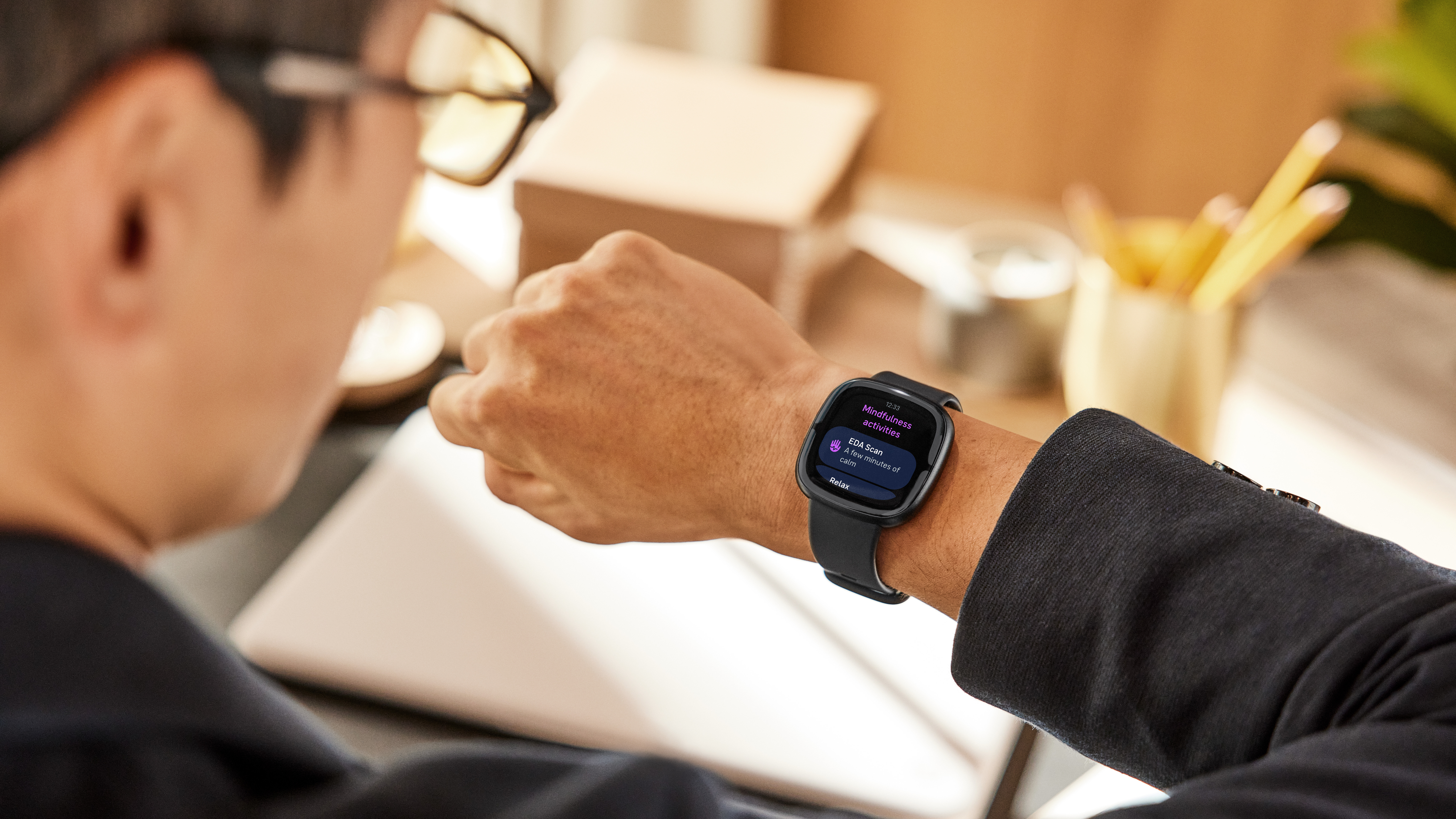
Aside from being more affordable, the Fitbit Versa 4 doesn't have any exclusive features that the Sense 2 doesn't also have. In exchange for a higher price, the Fitbit Sense 2 adds a gyroscope, an electrical sensor to measure skin conductance (cEDA), multipurpose electrical sensors for the ECG app, and a skin temperature sensor.
While the Versa 4 has an accelerometer to detect linear motion, the Sense 2's gyroscope will detect angular motion, which could give you more accurate tracking for specific sports or make it more likely the watch will detect when you turn your wrist to point the display towards you.
The original Sense had an EDA sensor that you could use to detect stress levels, but you had to trigger the test manually. The cEDA adds continuous tracking, consistently checking your body response for signs of stress and sending you notifications if you need to step away from work and breathe. Of course, this will burn through your 6-day battery more quickly.
The other electrical sensors enable an on-demand ECG app to check your heart rhythm. While the Versa 4 — and most of the other best Fitbit devices — detect atrial fibrillation (AFib) through the heart rate sensor, this feature relies on long-term trends. Only the Sense 2 can check your heart health on demand, as well as send you passive irregular heartbeat warnings.
Lastly, the Fitbit Sense 2 has a skin temperature sensor, which can help determine how well you slept and give a more accurate Daily Readiness Score as a result.
Fitbit Sense 2 vs. Versa 4: Which should you buy?
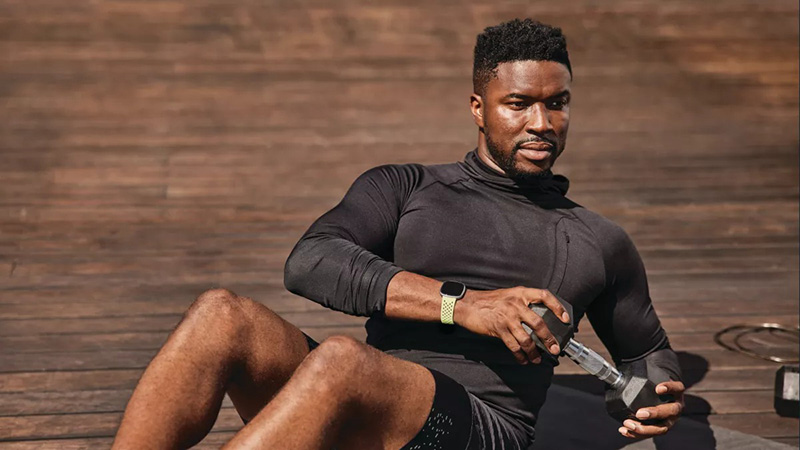
The Fitbit Versa 4 tracks the same workouts and will give you an impression of your overall health, stress, sleep, and fitness efforts by relying on the optical HRM and SpO2 sensors, though most of the reports will cost you a Premium membership. Considering Premium costs $80/year, it makes sense to save money upfront.
The Fitbit Sense 2 gathers more accurate data when it comes to all of the above health metrics. You can trust its Sleep or Stress Management Scores more than with the Versa 4, thanks to the bundled sensors. Otherwise, aside from the gyroscope, it doesn't seem to have any fitness perks over the Versa 4 if you're less interested in painstaking health data.
Although the Sense 2 is the better watch and doesn't appear to have any downsides compared to the Versa 4, the cheaper model holds its own in design comfort, visual quality, and most other specs — and will likely last longer because the Sense 2's extra sensors will drain the battery faster.
Your priorities will dictate which of these two peas in a pod fits your needs more.

All the Fitbit essentials
The Versa 4 added a physical button and new Google-backed software, but otherwise it offers a very similar experience to the 2020 Versa 3 for the same price. It's the fitness smartwatch most people will buy, even if it lacks the Sense 2's obsessive health data.

All the bells and whistles
The Fitbit Sense 2 is also pretty similar to the original Sense with the same AFib-detecting and temperature-sensing tools as before, but adds continuous stress tracking to make you more mindful of the stress in your daily life. It's the premium Fitbit smartwatch for people that want a proper snapshot of their daily health.

Michael is Android Central's resident expert on wearables and fitness. Before joining Android Central, he freelanced for years at Techradar, Wareable, Windows Central, and Digital Trends. Channeling his love of running, he established himself as an expert on fitness watches, testing and reviewing models from Garmin, Fitbit, Samsung, Apple, COROS, Polar, Amazfit, Suunto, and more.
